Profiling of Redox-Active Lipophilic Constituents in Leaf Mustard (Brassica juncea (L.) Czern.) Cultivars Using LC-MS and GC-MS
- PMID: 36552672
- PMCID: PMC9774780
- DOI: 10.3390/antiox11122464
Profiling of Redox-Active Lipophilic Constituents in Leaf Mustard (Brassica juncea (L.) Czern.) Cultivars Using LC-MS and GC-MS
Abstract
Leaf mustard is an important commercial and culinary vegetable. However, only limited information is available on the content and composition of the nutritionally important lipophilic constituents in these leaves. This research presents information on the contents and composition of carotenoids, tocols, phytosterols, and fatty acids in four cultivars of leaf mustard. The carotenoids and tocols were analyzed utilizing liquid chromatography (LC)-mass spectrometry (MS) with single ion monitoring (SIM), while phytosterols and fatty acids were analyzed using gas chromatography (GC)-MS and GC-flame ionization detection (FID), respectively. The LC-MS results revealed the dominance of (all-E)-lutein, within the range of 37.12 (cv. Asia Curled)-43.54% (cv. Jeok) of the total carotenoids. The highest amount of all of the individual carotenoids and total carotenoids (143.85 µg/g fresh weight; FW) were recorded in cv. Cheong. Among the studied leaf samples, 67.16 (cv. Asia Curled)-83.42 µg/g FW (cv. Cheong) of α-tocopherol was recorded. Among the phytosterols, β-sitosterol was the most dominant one among the studied mustard leaves, accounting for 80.42 (cv. Jeok)-83.14% (cv. Red frill) of the total phytosterols. The fatty acid analysis revealed the presence of a significant amount of rare hexadecatrienoic acid (C16:3n3) in the studied mustard leaves, which accounted for 27.17 (cv. Asia Curled)-32.59% (cv. Red frill) of the total fatty acids. Overall, the cv. Cheong represented the highest contents of carotenoids, tocols, and phytosterols. Moreover, cv. Red frill contains the highest amount of n-3 PUFAs and antioxidant compounds. Thus, these cultivars can be promoted in cuisines which can be eaten to obtain the highest health benefits.
Keywords: antioxidant activity; carotenoids; fatty acids; lutein; omega-3 fatty acids; phytochemicals; phytosterols; tocopherol.
Conflict of interest statement
The authors declare no conflict of interest.
Figures
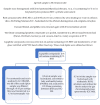


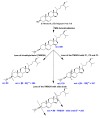
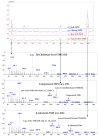


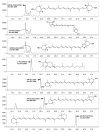
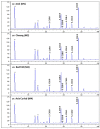
Similar articles
-
Quantitative Profiling of Carotenoids, Tocopherols, Phytosterols, and Fatty Acids in the Flower Petals of Ten Marigold (Tagetes spp. L.) Cultivars.Foods. 2023 Sep 24;12(19):3549. doi: 10.3390/foods12193549. Foods. 2023. PMID: 37835202 Free PMC article.
-
Profiling of Nutritionally Vital Bioactive Compounds in Emerging Green Leafy Vegetables: A Comparative Study.Foods. 2022 Nov 30;11(23):3867. doi: 10.3390/foods11233867. Foods. 2022. PMID: 36496677 Free PMC article.
-
Analysis of Lipophilic Antioxidants in the Leaves of Kaempferia parviflora Wall. Ex Baker Using LC-MRM-MS and GC-FID/MS.Antioxidants (Basel). 2021 Oct 5;10(10):1573. doi: 10.3390/antiox10101573. Antioxidants (Basel). 2021. PMID: 34679708 Free PMC article.
-
Characterization of nutritionally important lipophilic constituents from brown kelp Ecklonia radiata (C. Ag.) J. Agardh.Food Chem. 2021 Mar 15;340:127897. doi: 10.1016/j.foodchem.2020.127897. Epub 2020 Aug 26. Food Chem. 2021. PMID: 32871355
-
Bioactive Sugarcane Lipids in a Circular Economy Context.Foods. 2021 May 19;10(5):1125. doi: 10.3390/foods10051125. Foods. 2021. PMID: 34069459 Free PMC article. Review.
Cited by
-
Discrimination between the Triglyceride Form and the Ethyl Ester Form of Fish Oil Using Chromatography-Mass Spectrometry.Foods. 2024 Apr 8;13(7):1128. doi: 10.3390/foods13071128. Foods. 2024. PMID: 38611433 Free PMC article.
-
Quantitative Profiling of Carotenoids, Tocopherols, Phytosterols, and Fatty Acids in the Flower Petals of Ten Marigold (Tagetes spp. L.) Cultivars.Foods. 2023 Sep 24;12(19):3549. doi: 10.3390/foods12193549. Foods. 2023. PMID: 37835202 Free PMC article.
-
Carotenoid and Tocopherol Profiling in 18 Korean Traditional Green Leafy Vegetables by LC-SIM-MS.Foods. 2023 Mar 19;12(6):1312. doi: 10.3390/foods12061312. Foods. 2023. PMID: 36981238 Free PMC article.
-
Profiling the Bioactive Compounds in Broccoli Heads with Varying Organ Sizes and Growing Seasons.Plants (Basel). 2024 May 11;13(10):1329. doi: 10.3390/plants13101329. Plants (Basel). 2024. PMID: 38794399 Free PMC article.
References
-
- Aune D., Giovannucci E., Boffetta P., Fadnes L.T., Keum N., Norat T., Greenwood D.C., Riboli E., Vatten L.J., Tonstad S. Fruit and vegetable intake and the risk of cardiovascular disease, total cancer and all-cause mortality-a systematic review and dose-response meta-analysis of prospective studies. Int. J. Epidemiol. 2017;46:1029–1056. doi: 10.1093/ije/dyw319. - DOI - PMC - PubMed
-
- Hajizadeh-Sharafabad F., Ghoreishi Z., Maleki V., Tarighat-Esfanjani A. Mechanistic insights into the effect of lutein on atherosclerosis, vascular dysfunction, and related risk factors: A systematic review of in vivo, ex vivo and in vitro studies. Pharmacol. Res. 2019;149:104477. doi: 10.1016/j.phrs.2019.104477. - DOI - PubMed
LinkOut - more resources
Full Text Sources
Miscellaneous

